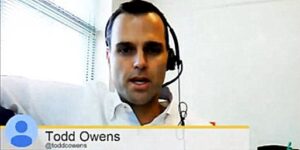
5 Tips to Improve the Mobile Candidate Experience
To engage prospective candidates where they spend the most time, employers must be proactive about offering a mobile-friendly candidate experience.

To engage prospective candidates where they spend the most time, employers must be proactive about offering a mobile-friendly candidate experience.

The pointless 9-to-5 grind is dead. Today, people need a purpose in their work. They want to be part of something, and our corporate communication
Growth is happening on the global front at a dizzying pace, even in the current economy. Companies are expanding into or within regions where they

“The end cannot justify the means, for the simple and obvious reason that the means employed determine the nature of the ends produced.” –Aldous Huxley

We know that mobile tools are rapidly transforming recruitment. But what about the rest of the hiring process? #TChat talks about why employers need to get ahead of the curve

Mobile recruiting is revolutionizing HR. Now it’s time for mobile hiring to step in where the mobile candidate experience leaves off…

Once in awhile we come face-to-face with reminders that HR really has come a long way, baby

Mobile recruiting is on the rise. What about mobile hiring? The TalentCulture community talks with HR technology experts

Mobile devices are fast becoming the standard for connectivity in today’s work world. But what does that really mean for HR processes like hiring? Let’s talk…
As a digital native, I grew up with the web. And by that I don’t mean I just grew up with Internet access, though that’s
Mobile technology meets workgroup collaboration – how are organizational cultures shifting in the face of pending smart phone ubiquity?
#TChat predictions for the year ahead in talent management…
I remember way back in the fall of 2009 (yes, it feels that way), both at the HR Technology Conference and Onrec, that the three